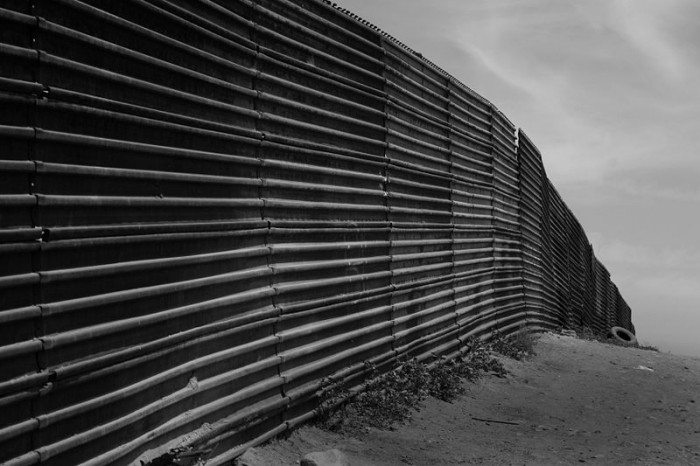What does a billion-dollar mistake look like? Actually he looks like a 70-year-old demagogue politician who lives in the White House but if that’s not enough, then it sounds like you’ll have a big ass wall to remind you. If Donald Trump follows through with his irresponsible use of taxpayer funds to build a ridiculous wall under the pretext of stopping migrants and drugs from satisfying the demands in the United States, you’ll have a constant reminder when your tax dollars build his wall. If we take a minute to look past the populist rhetoric, we may be able to see another side to this issue.
Regarding immigration, I’m no expert on the matter. That said, according to the Pew Research Center, in a five-year period from 2009 thru 2014, there was a significant decrease in the number of Mexican migrants residing in the U.S. This is relevant as Trump continues to unilaterally destroy relations with Mexico to levels not seen probably since the Mexican-American War. According to the 2014 Mexican National Survey of Demographic Dynamics, between the same period, roughly one million Mexican nationals and their families (including their American-born children), left the U.S. for Mexico. These trends continue today, and as the William C. Velásquez Institute stated: “The southern border with Mexico has experienced near zero or zero net migration since 2007, thus there is no rational basis for a border wall.” Yes, there’s activity on the border, but to argue that immigration to the U.S. is out of control only to support Trump’s political position is simply wrong and akin to the propaganda promoted by East Germany when building the Antifaschistischer Schutzwall (aka the Berlin Wall).
With regard to the idea that building a wall to stop the flow of drugs, well that’s perhaps twice as naive if not outright stupid. Notwithstanding the role of the American appetite in this equation, the existing walls along the border have done absolutely nothing to stop the flow of drugs other than to motivate more creative methods of transport. Let’s take a minute to examine some of the various other ways drugs make their way across the border. For starters, one of the more recent and popular methods have been the underground tunnels. Since 2006, more than 80 tunnels have been discovered—13 of which got the prestigious classification of “sophisticated tunnels.” In fact, the tunnels have become so popular that Homeland Security and other local law enforcement are working together on a special task force called the San Diego Tunnel Task Force. These so-called “sophisticated tunnels” cost and average $1 million dollars. Usually, the very first load pays the cost associated with building a tunnel, which include (among other things) lighting systems, air ventilation, pulley carts on tracks, water-pumping equipment with generators and for some, the buildings from where you enter and exit on both sides of the border. One recent tunnel discovered last April not only had all of the described luxuries of a drug tunnel but was nearly 800 meters long or in American terms more than eight football fields.
Then we have some of the other more creative methods of smuggling goods some with relative success. Those include an improvised mobile PVC-pipe-mounted cannon that shoots bundles of drugs over the wall, kind of like the smaller versions of the t-shirt shooters you see at sporting events. If that’s not simple enough for you, then we have one of my favorites only because they look cool: the catapult, as in the style invented by the ancient Greeks and soon became a key weapon in warfare, remaining so up through medieval times. We also have the ultralight remote control drone aircrafts, some of which can carry up to 300 pounds of goods and sometimes referred to as “lawnmower carriers” because they look like flying lawnmower machines. Of course, we now have the pesky ramps designed to drive over the walls (yes up and over a big ass wall). And did I mention the submersibles, which continue to grow in popularity? You know, that locally-sourced hand-built organic submarine which can hold up to crews of four and carry multiple tons of product?
Building a “fortified” wall is as stupid a solution as is walking around with a cardboard umbrella in a thunderstorm.
So what’s the solution, you ask?
It’s simple: legalization.
Yes. Legalize marijuana, the number-one producer of wealth for the cartels. End the federal prohibition, invest in research and infrastructure, support medical advances and improve upon the nation’s economy all the while ending the war on drugs and stopping the bankroll of modern-day gangsters who have far surpassed the likes of Al Capone and Bugsy Malone. In places like Colorado and other legalized states, we are already seen a decrease in cartel activity and soon California will follow, having legalized this past November. With nothing more than responsible legislation and a signature, drug law reform can help dismantle the drug trade and be infinitely more effective than any wall ever has been or ever will be.
***
Armando Gudiño is a political strategist and analyst based in Los Angeles. He is currently a Policy Manager at the Drug Policy Alliance’s Los Angeles office, where he focuses on Latino outreach strategies, public policy and drug reform legislation focused on issues of mass incarceration, taxation and regulation of marijuana, and drug policy in the Latino community.



